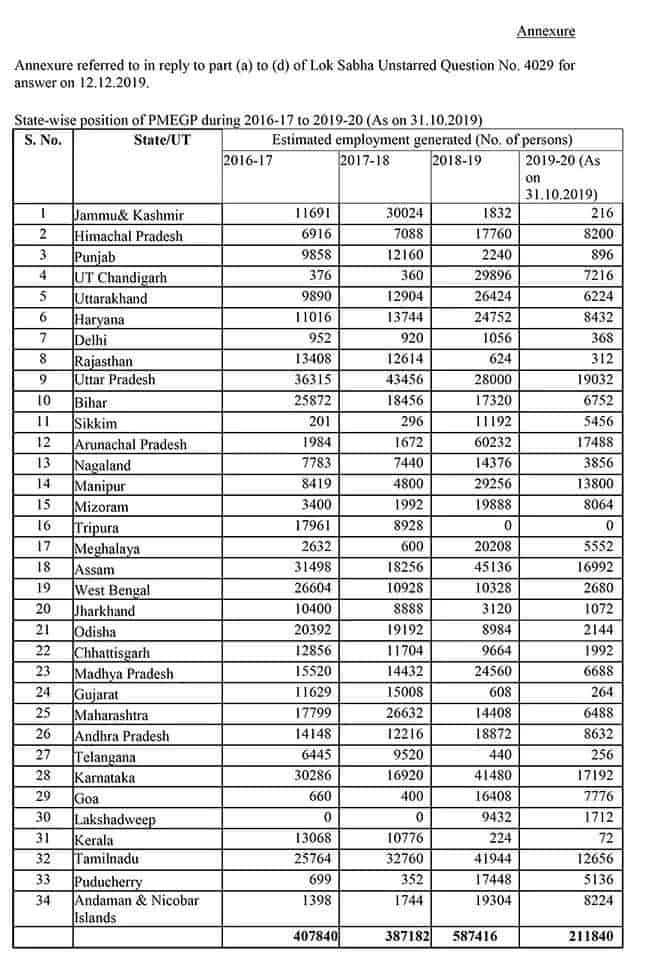MSME Ministry administered PMEGP scheme is a merger of two pre-existing schemes- Rojgar Yojna and Rural Employment Generation Programme, introduced in 2008. Primarily focusing to establish an elevated and secure employment rate, this scheme was introduced by Khadi and Village Industries Commission (KVIC) at the national level. The same is implemented by versions of similar bodies at the state level, such as the State Khadi and Village Industries Commission (SKVIC), Khadi and Village Industries Board (KVIB), District Industries Centres (DICs), and banks.
Goals Endeavoured by PMEGP
The scheme is directed in the path of a higher employment rate. Acknowledging that its three primes objectives are:
- Increase the employment rate in both urban and rural communities by proving support to several entrepreneurship ventures. Also, aid the purpose by setting up micro initiative projects.
- To ensure continuous and sustainable employment, irrespective of sectors. That is the government shall aid in a way such that all the sectors will be capable of providing a justifiable employment.
- Finally, to arrest migration from rural to urban areas by proving sustainable jobs with improved wages. Also, this will assist in improving the growth of the employment rate.
Eligibility
- Any individual with an age over 18 is eligible to apply
- Minimal qualification of passing VIII standard is necessary to entitle a project requiring Rs 5 lakh for service and Rs 10 lakh for manufacture.
- The institutions claiming to a part must enroll under Societies Registration Act- 1860
- Co-operative associations (Production based), altruistic trusts, and self- aiding groups are also qualified.
Striking Features of PMEGP
- It is important to note that guidance under PMEGP is provided to only new and to be established units. Thus, the existing unit and any units claiming government subsidies are not eligible.
- The per capita investment under PMEGP is limited to Rs 1 lakh in plain lands while it is Rs 1.5 lakh in hilly areas.
- Maximum loan of any undertaken project will be Rs 10 lakh (service) and Rs 25 lakh (manufacturing).
- Own contribution from 5% to 10% of the total project cost.
- Subsidies are an important characteristic of this scheme. Generally, the urban community received subsidies lesser than Rural area projects. Similarly, in the general category, rural projects are allotted 25% and Urban areas receive 15% subsidies. In the case of projects under special categories, rural areas obtain 35% and urban areas collect 25%.
- It must be noted that no collateral security is required. The only term is that any assets formed from the bank loan must be pledged to the bank.
- Beneficiaries are expected to complete a 2 weeks training period
Applying on the Portal
A traditional method is issued by KVIC of corresponding states via advertisements through posters and electronic platforms encouraging application from interested candidates. The beneficiaries are advised to submit their enrollment form click here
- Visit either my.msme.gov.in or kviconline.gov.in website
- Select the “Prime Minister Employment Generation Programme” or “PMEGP ePortal” option
- Following the link opens, to fill the application form click on “Online Application Form for Individual”
- Once the application is visible, the form must be filled with sheer honesty
- Bank details along with IFSC code
- Once the application is filed, it must be saved by clicking on “Save Applicant Data”
- Upload all the required documents as proof
- Subsequently, the filled form along with the uploaded documents must be submitted to complete the registration process.

The Important Information to be Mentioned in the Application Form
- Aadhaar number
- Name of the applicant
- Sponsoring Agency (agency where the form is submitted) and office
- State and District
- Select Gender and Social Category
- Date of Birth
- Educational Qualification
- Residential address as well as the unit address (or proposed unit address)
- Type of the activity must be selected while naming the specific activity (Industrial or product description)
- If EDP training completed, the name of the institute must be mentioned
- Loan requirement
- Capital expenditure
- Working capital
- Total loan